Miguel Medialdea just may be the Elon Musk of aquaculture, though you’ve likely never heard of him. He’s the head biologist at Veta la Palma, an hour or so drive southwest of Seville along the Atlantic coast, where the Guadalquivir River empties into the Gulf of Cadiz. The farm is an 8000-acre system of ponds that is part of a larger protected wetland area called Doñana Nature Site, and has been carefully designed to pump one million cubic meters of water from the river through the entire system to maintain oxygenation and water quality. Just by looking at it, you might not even recognize the farm as a farm. At an aerial view it’s clear and apparent that the channels have been dug and engineered by man, but from the ground the landscape looks like a natural habitat. And in many ways, it is.
Aquaculture – the farming of marine organisms – accounts for the production of 70 million tons of fish every year, propping up the commercial fishing industry which has seen drastic decline in supply over the past five decades. According to the UN Food and Agriculture Organization (FAO), only 6.2% of the world’s marine fish populations are neither “fully fished” or “overfished”. “Fully fished” meaning that the fish are being caught at a maximum sustainability yield. In other words, the most that can be taken without collapsing the supply. And overfished, well, meaning a likely eclipse beyond the possibility of return.
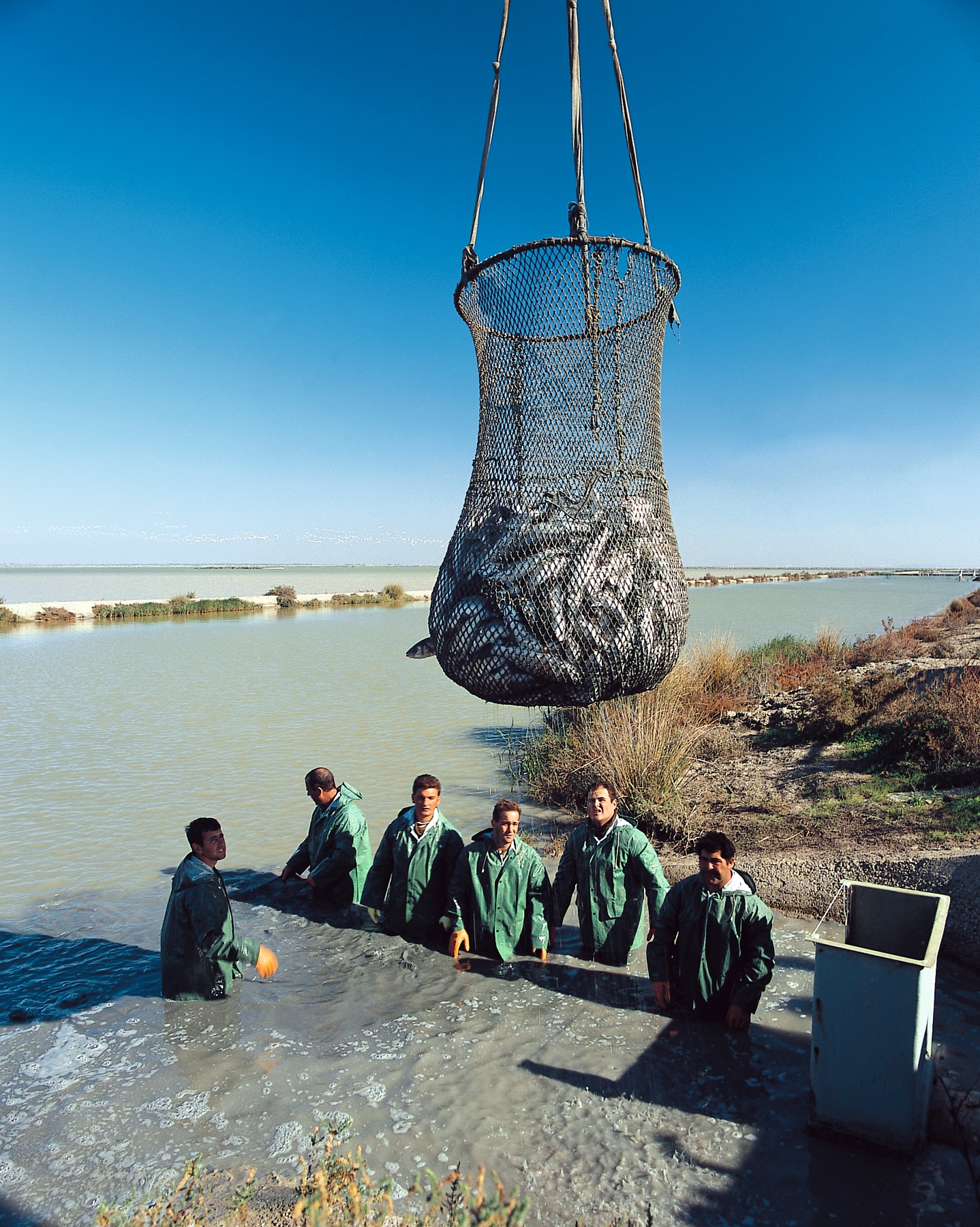
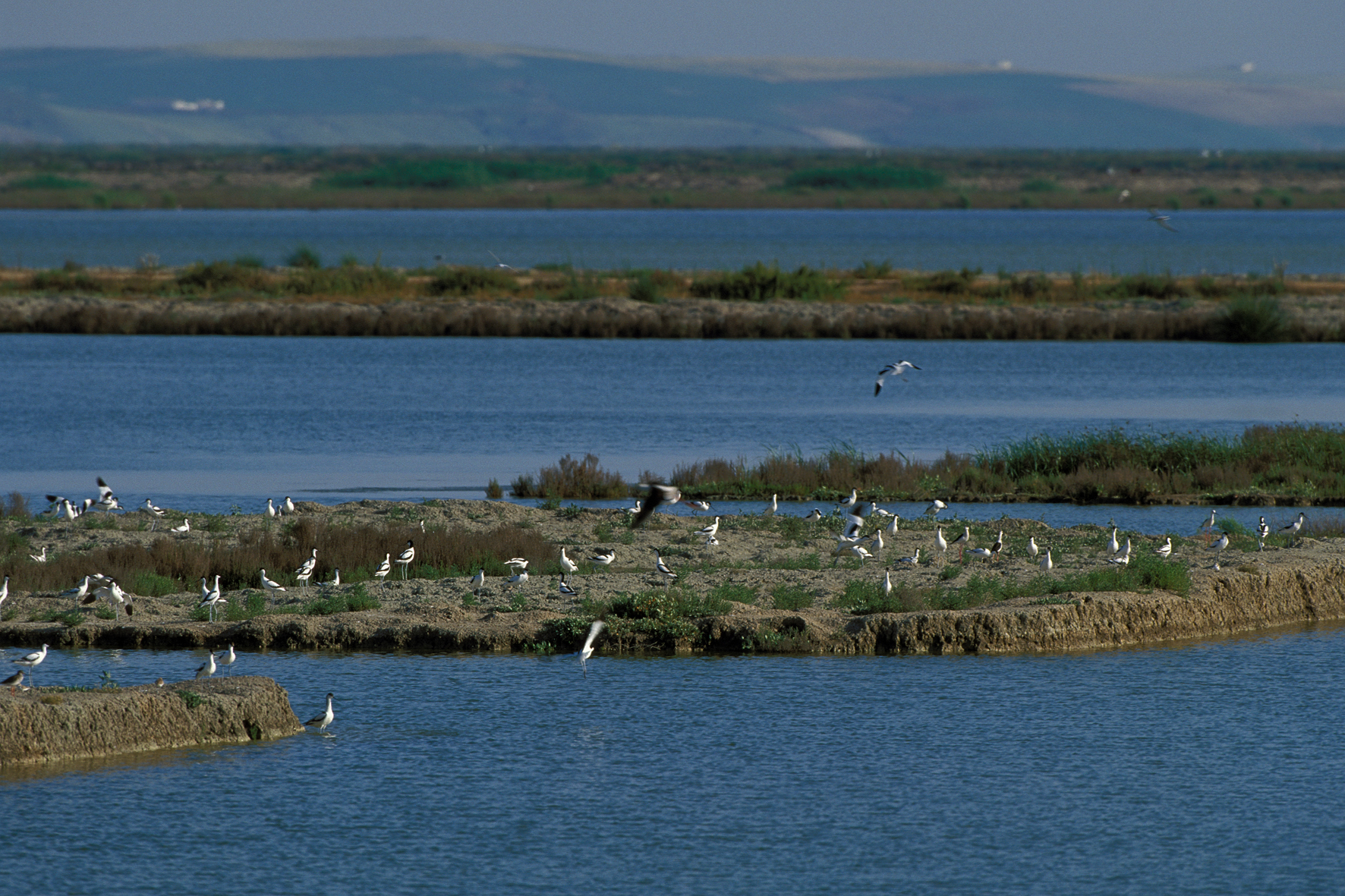
Miguel is the first to admit that he’s not so much a farmer, but rather an expert in relationships. Since the 1990s, when Veta la Palma’s land was purchased by new ownership after decades of being over-stripped in raising cattle, he and his team have been piloting a format of aquaculture that operates as “a biodynamic system of semi-natural cultivation” (his words, not mine), meaning that they raise their fish in conditions that are as close to natural ones as possible.
Veta la Palma is a closed-loop system, mimicking the closed-loop nature of our planet’s healthy ecosystems. The system is so healthy, in fact, that it doesn’t need to feed its fish, an abnormality in the aquaculture business which often relies on wild-caught fish at a feed conversion ratio at best of 2 to 1 (two kilograms of foraged fish to produce one kilogram of sellable fish). By contrast, Veta la Palma’s fish feed off of the other living organisms in the ecosystem, a process that begins with the sun encouraging the growth of algae and plankton, the main source of food for the farm’s shrimp and other crustaceans, and continues with the fish eating those shrimp and crustaceans. But the story doesn’t end there. In the natural world fish have predators, and on this farm it’s no different.
One of our most important objectives is to always work under ecosystem carrying capacity in order to maximize natural resilience. To be truly sustainable it is necessary to impose limits.
Decades ago when the land was in the hands of the cattle ranchers, the birds that were native to this area essentially disappeared. After Veta la Palma re-flooded the land for fish farming, the birds started returning. The farm is now home to more than 250 different species and happens to be one of the most important bird sanctuaries in all of Europe. They actually lose about 20 percent of their fish stock to birds, a marker of success in Miguel’s eyes. According to him, Veta la Palma “farms extensively over intensively” and, as an ecological network, the birds contribute their part. “[They] indirectly help to recycle nutrients in the water, making the system more efficient,” Miguel tells me. They also assure that the fish populations maintain Veta la Palma’s key low density ratio of 4 kilograms per cubic meter, which helps stave off diseases that tend to plague conventional, overcrowded fish farms.
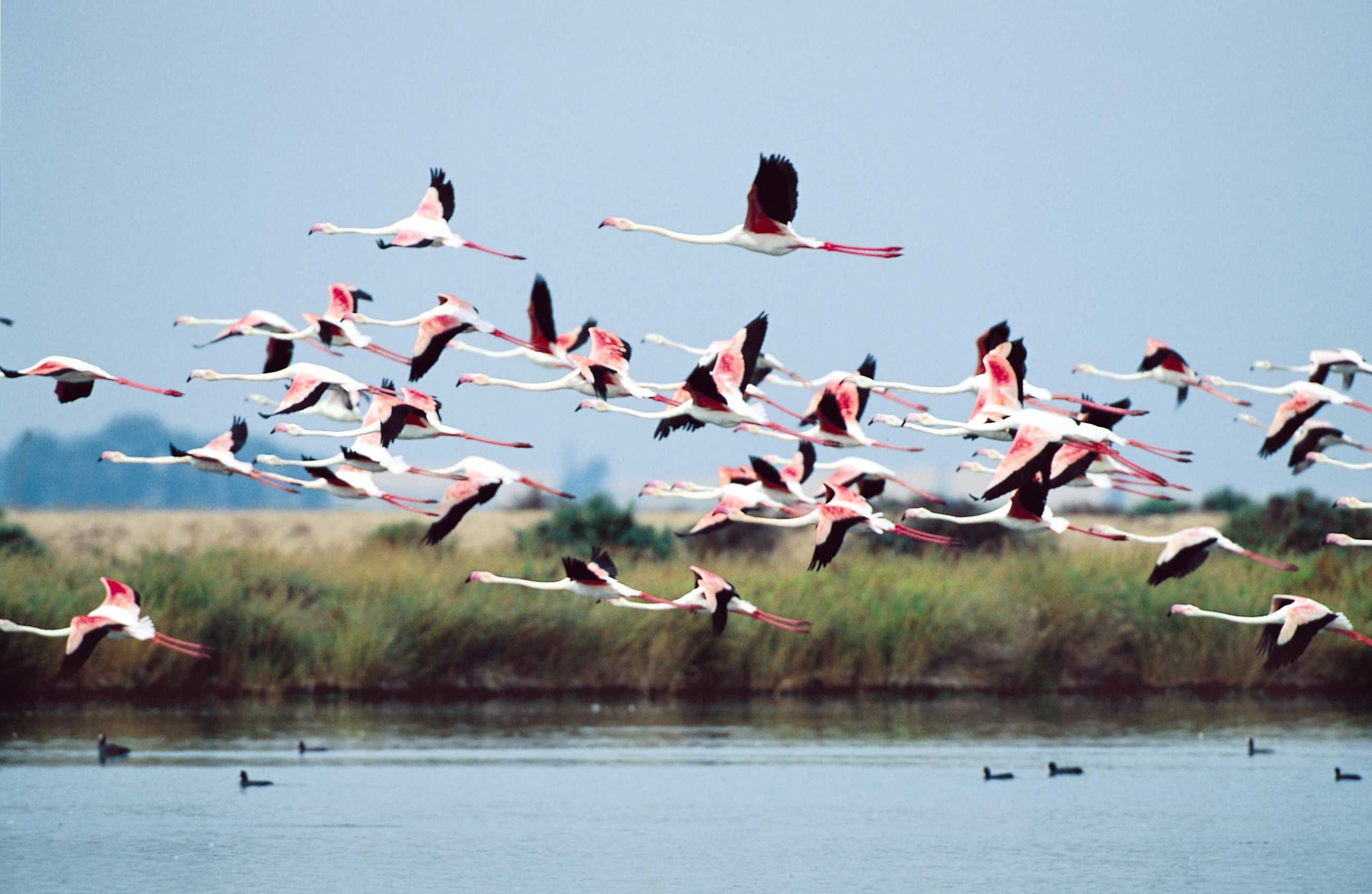
“One of our most important objectives is to always work under ecosystem carrying capacity in order to maximize its natural resilience,” says Miguel. “To be truly sustainable it is necessary to impose limits.”
But limits can still mean healthy outputs. And at Veta la Palma, it does.
Turns out that one of the side effects of a balanced ecological network is that it produces great tasting food, which has attracted the attention of some of the world’s most prominent chefs. Dan Barber, author of The Third Plate and proprietor and head chef of Michelin-starred Blue Hill restaurant sang a Veta la Palma fish’s praises in a 2010 TED talk. He usually doesn’t care for the tar-like flavor of fish skin, he tells the audience, but was astounded at how the skin of this fish tasted sweet, and clean. A testament to the purity of the water at the farm, as skin is evolutionarily designed to soak up impurities. Experimental fine-dining luminary, Ángel León of Aponiente restaurant in Cadiz, utilizes not only Veta la Palma fish but has also partnered with the farm to champion another product that comes out of its ponds: marine plankton, or Plancton Marino. Full of nutrition, it’s a vegan ingredient, freeze-dried and blended into a powder, that can enhance dishes with “the authentic flavor of the sea”.
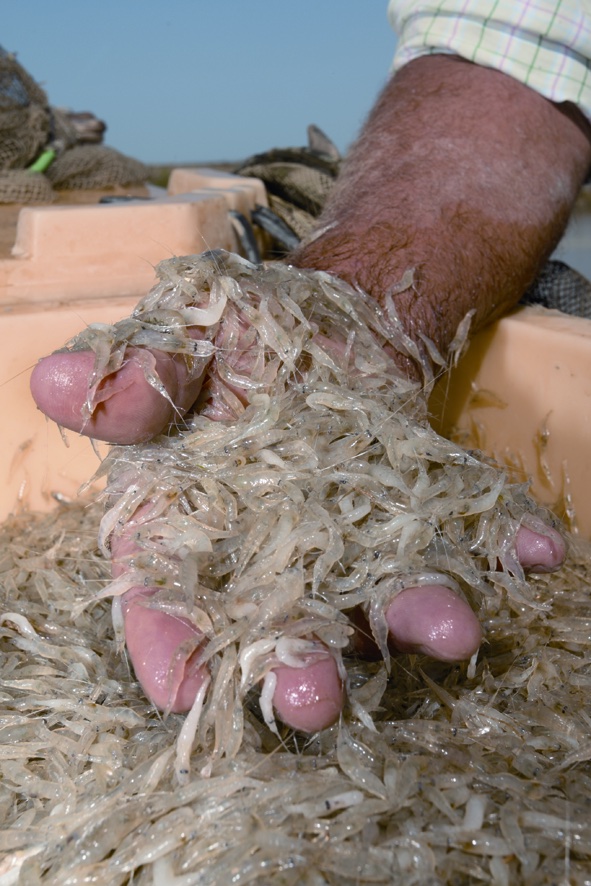
The farm's shrimp are both sold and are food for the fish.
It is important to think that if someone consumes fish from Veta la Palma in the US, or wherever, he or she is contributing directly to the conservation of a unique natural environment, whose values are the heritage of the entirety of humanity.
So is Veta la Palma’s method scalable? Yes, and no. Their current farm cannot expand because it’s surrounded by land dedicated only to natural conservation. And because of their self-imposed capacity limits, commercial viability comes with positioning their product on the higher-end: prices for their sea bass are around $19 a pound when exported to the United States, or around €16 a kilo in Spain. Most of us don’t have the pocketbooks to sustain our modern-day seafood appetites on Veta la Palma’s supply; but maybe we just shouldn’t be eating that much fish. Maybe less really could be better.
While Veta la Palma isn’t able to scale their current operation to increase supply and feed more mouths, their ideas are in high demand. They’ve contributed as consultants to organizations under the UNEP Mediterranean Action Plan, helping to connect the dots between the private aquaculture sector with the public conservation efforts of rehabilitating threatened species and sensitive ecosystems in other Mediterranean coastal areas. For now it seems as though their product – sea bass, bream, meagre, mullet and shrimp – will remain a delicacy. But the example set, one of commercial interests working in synchronicity with ecological ones, provides a north star toward which we can guide our future relationship with the natural world.
Veta la Palma’s efforts are reaching a timely stride as the issue of the overfishing of our oceans is entering a mainstream consciousness partly thanks to this year’s Netflix release, Seaspiracy. The film got some things wrong, but the important ones right: that our ever-increasing appetite for fish consumption is leading to the collapse of marine ecosystems; that industrial fishing deprives local economies; that “sustainable” seafood is not often what we think it is; and that all of this leads to human rights abuses that largely go unchecked. The filmmakers were right to point out that many feel-good ‘sustainability stamps’ on our grocery-store seafood need to be challenged for their veracity. But they also painted a no-way-forward picture suggesting there’s no ethical way to consume seafood. But the work that Miguel and his team are doing, the system and process they’ve designed, to me clearly demonstrate an ethical way forward. A method and philosophy of producing seafood, or really just any product in general, that hacks the best of human ingenuity to nurture win-win-win scenarios: wins for flora and fauna, wins for the bottom line, and wins for us; in this case with a superior-tasting fish.
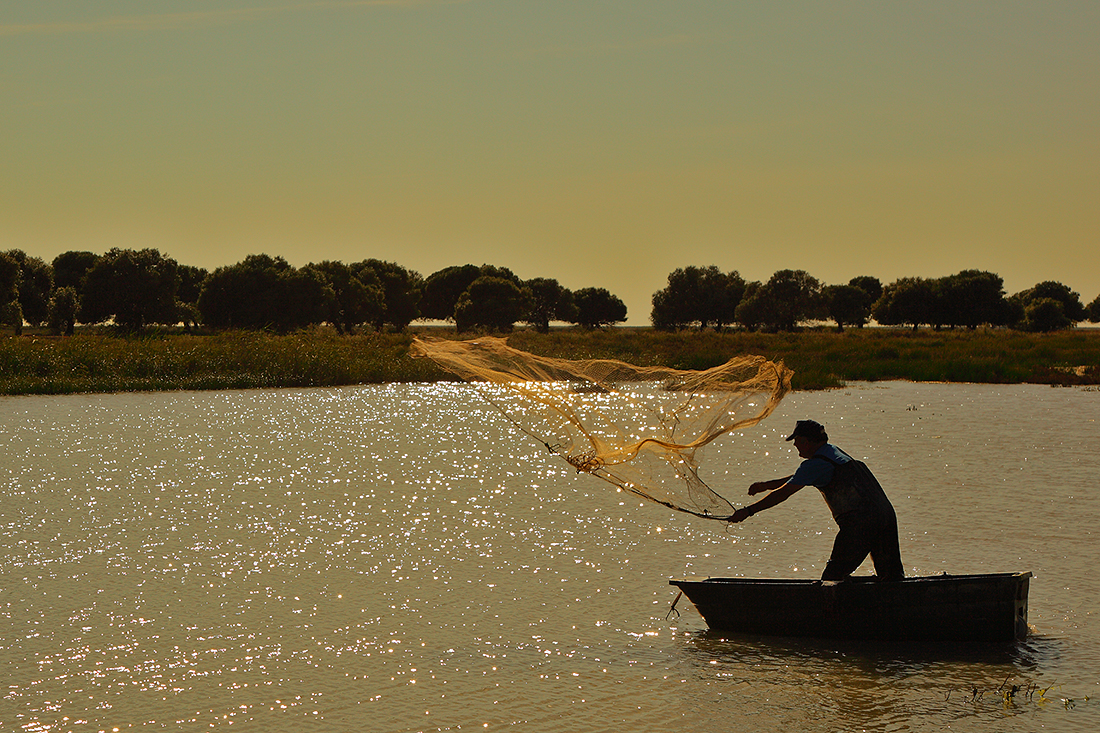
Living in the US, I wrestled with whether or not it was “sustainable” or “eco-conscious” to order a Veta la Palma sea bass from halfway around the world. Did the ecological benefit outweigh a negative carbon impact? After an extensive search of comparable operations stateside, and realizing that there really weren’t any, I asked Miguel what his thoughts were.
“It’s always preferable to consume local products and contribute to the socio-economic-ecological welfare of nearby communities,” he told me. “But it is also important to think that if someone consumes fish from Veta la Palma in the US, or wherever, he or she is contributing directly to the conservation of a unique natural environment, whose values are the heritage of the entirety of humanity, not only of our region or continent.”
Miguel’s self-imposed commercial limits rule out the possibility that he’d make such a statement in an effort to sell more fish (they’re already selling all the fish they need to!). I now can’t help but think of all my decisions through how they square with humanity’s collective heritage. Who we support, how we consume, what we advocate for, it all means something; it looks toward somewhere. In this case it’s a fish that asks deeper questions about how we interact with the planet. What is our relationship to our ecology? What is our responsibility to the future? How do we want that future to judge the heritage of the entirety of humanity?
It’s all looking toward somewhere beyond the fish on tonight’s dinner plate.
—
To learn more about Veta la Palma:
vetalapalma.es
To order Veta la Palma product in the USA:
brownetrading.com
Next Story
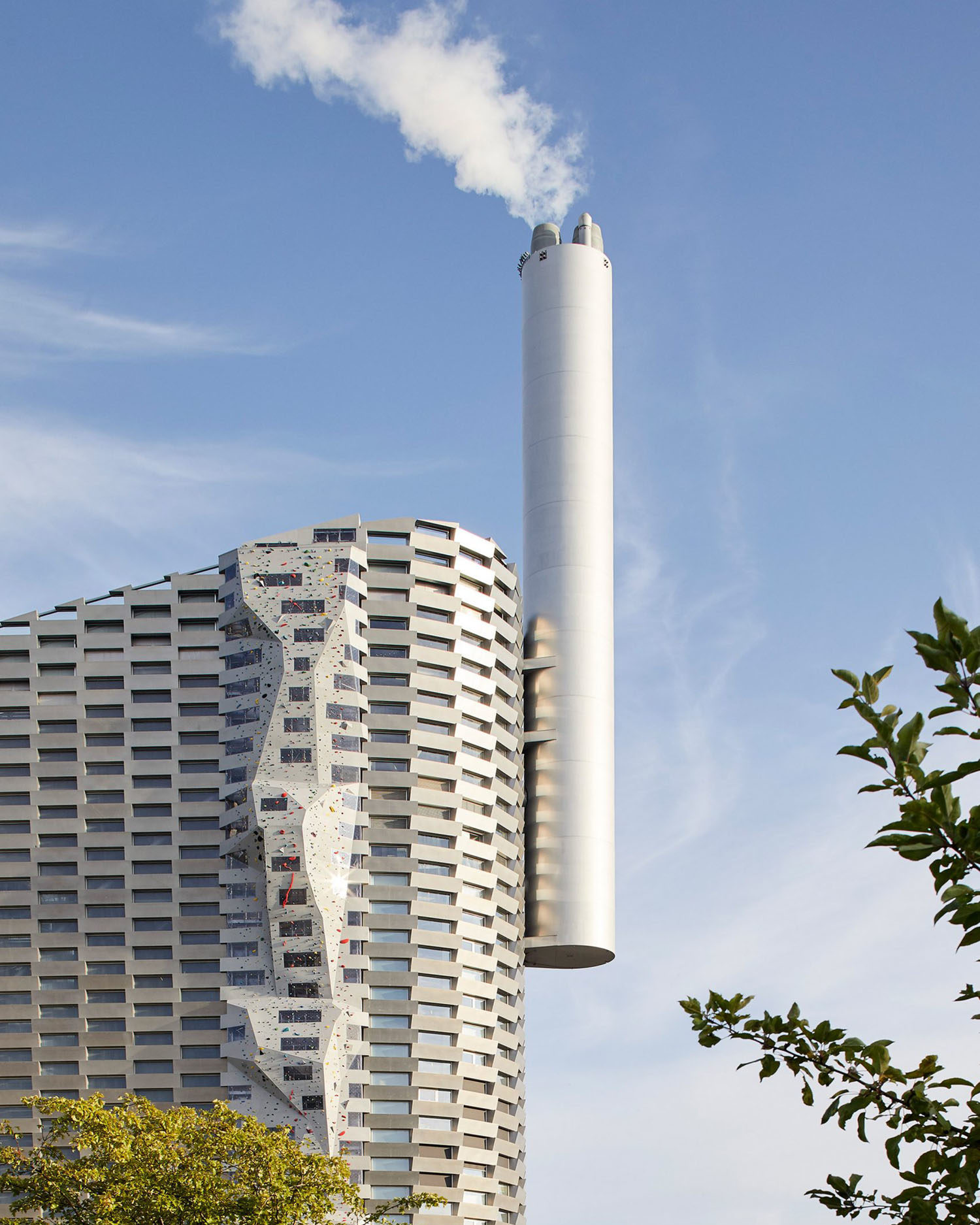
Opinion, Issue 01
Design and Nature: The Symbiosis of the Future
Could 2021 be the year we look to designers to help imagine and build a better future? What role ...
Read Story